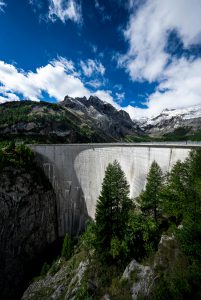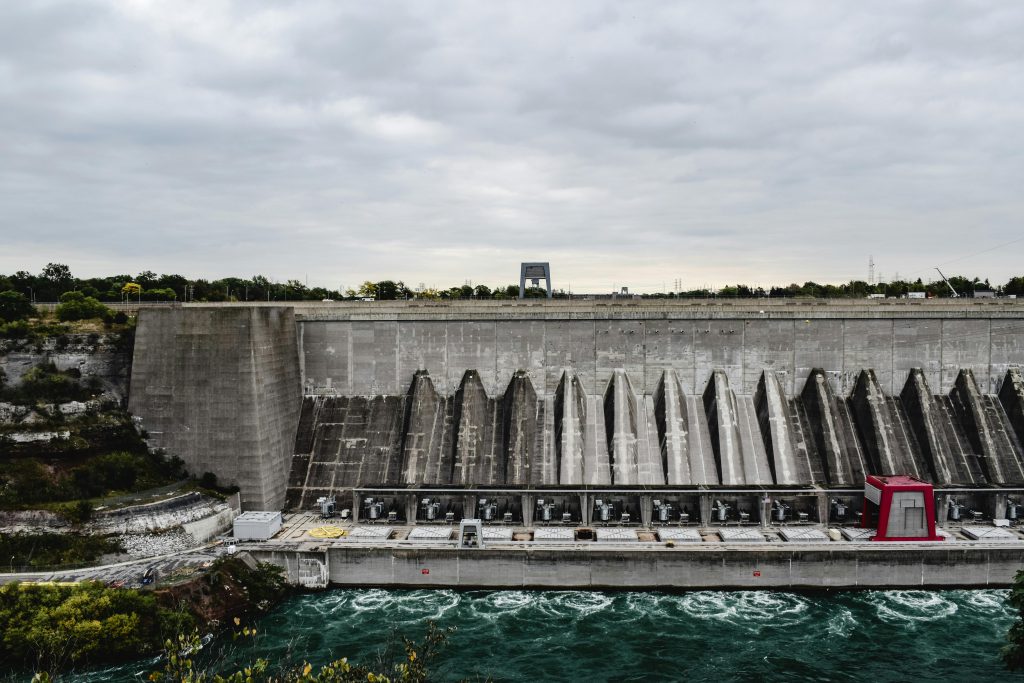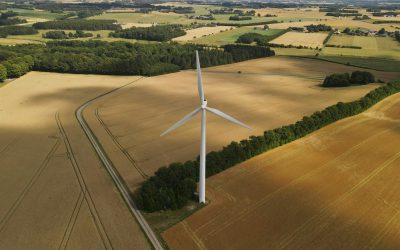Renewable Energy Sources-Hydropower
Humans have used water power for centuries. But we didn’t start making hydropower—electricity from our rivers, streams, and lakes—until just over 100 years ago, not too long after Thomas Edison invented electric power. Today, instead of using large, wooden wheels, we use propeller-like devices called turbines, which spin as water rushes through them, generating electricity. But hydropower has a secret power: It can also store huge amounts of renewable energy to use when other sources dry up. Right now, hydropower provides about 7% of the United States’ electricity and about 40% of our renewable energy. And almost every state uses it. The oldest form of renewable energy, it’s also one of the most affordable and can provide a clean, sustainable, and reliable way to power our lives for centuries to come. [1]
Hydropower, or hydroelectric power, is a renewable source of energy that generates power by using a dam or diversion structure to alter the natural flow of a river or other body of water. Hydropower relies on the endless, constantly recharging system of the water cycle to produce electricity, using a fuel—water—that is not reduced or eliminated in the process. There are many types of hydropower facilities, though they are all powered by the kinetic energy of flowing water as it moves downstream. Hydropower utilizes turbines and generators to convert that kinetic energy into electricity, which is then fed into the electrical grid to power homes, businesses, and industries. [2]

Water technologies encompass a variety of systems that use ocean or freshwater for electricity or thermal energy. The most familiar water technology is hydropower, in which the force of moving water propels a turbine, which runs a generator to create electricity. Hydropower and other water technologies are renewable because their fuel is naturally replenished through the water cycle; they are clean alternatives to burning fossil fuels that cause climate change. Hydropower does not require the purchase of fuels for generation, unlike natural gas, coal and other fuel-burning plants. The only costs are the construction and operation of the generation facilities. Globally, hydropower accounts for about 15 percent of electric generation. In 2014, U.S. hydropower plants had a capacity of about 101,000 megawatts (MW) and produced 6 percent of the total energy and 48 percent of renewable electricity in the United States. [4]
Understanding the water cycle is important to understanding hydropower. The water cycle has three steps: [3]
• Solar energy heats water on the surface of rivers, lakes, and oceans, which causes the water to evaporate.
• Water vapor condenses into clouds and falls as precipitation—rain and snow.
• Precipitation collects in streams and rivers, which empty into oceans and lakes, where it evaporates and begins the cycle again.
The amount of precipitation that drains into rivers and streams in a geographic area determines the amount of water available for producing hydropower. Seasonal variations in precipitation and long-term changes in precipitation patterns, such as droughts, can have significant effects on the availability of hydropower production. [3]
Hydropower costs less than most other energy sources, making it an affordable renewable energy source. Except during periods of extreme drought, we can count on water to flow day and night and all year round. This consistency is critical if we want to rely purely on clean energy sources, such as solar energy and wind power, which can come and go. New hydropower technologies keep getting better, too. They make it easier to build new facilities without too much disruption to the local environment. And they help cut construction costs, which could make hydropower even more affordable, potentially reducing energy bills across the country. [1]
Hydropower facilities can also control how much water flows through their turbines and, therefore, how much energy they produce and when. That way, hydropower can fill energy gaps to ensure communities always get the power they need—or restore it. When ice storms, wildfires, or even hackers stop the electric grid from lighting up our lives, hydropower can help. In almost half of all blackouts, it’s water that turns the lights back on. Losing power during a heat wave or at a hospital is not just inconvenient; it can be dangerous. Hydropower can save lives. [1]
 Water housed in hydropower facilities can be used to water crops, put out wildfires, or provide clean drinking water to local communities. In some areas, such as the drier Western states, the warming climate is likely to cause more droughts, which could threaten water supplies. Because hydropower facilities can absorb and store extra water, they can help communities manage their supplies. In the Northeast, on the other hand, climate change is likely to cause more flooding. Hydropower can help with that, too. Its reservoirs can capture dangerous run-off, preventing those waters from surging into towns and cities where it can threaten properties and lives. [1]
Water housed in hydropower facilities can be used to water crops, put out wildfires, or provide clean drinking water to local communities. In some areas, such as the drier Western states, the warming climate is likely to cause more droughts, which could threaten water supplies. Because hydropower facilities can absorb and store extra water, they can help communities manage their supplies. In the Northeast, on the other hand, climate change is likely to cause more flooding. Hydropower can help with that, too. Its reservoirs can capture dangerous run-off, preventing those waters from surging into towns and cities where it can threaten properties and lives. [1]
References
[1] https://www.nrel.gov/research/hydropower.html
[2] https://www.energy.gov/eere/water/how-hydropower-works
[3] https://www.eia.gov/energyexplained/hydropower/
[4] https://www.eesi.org/topics/water-hydropower-wave-power/description



